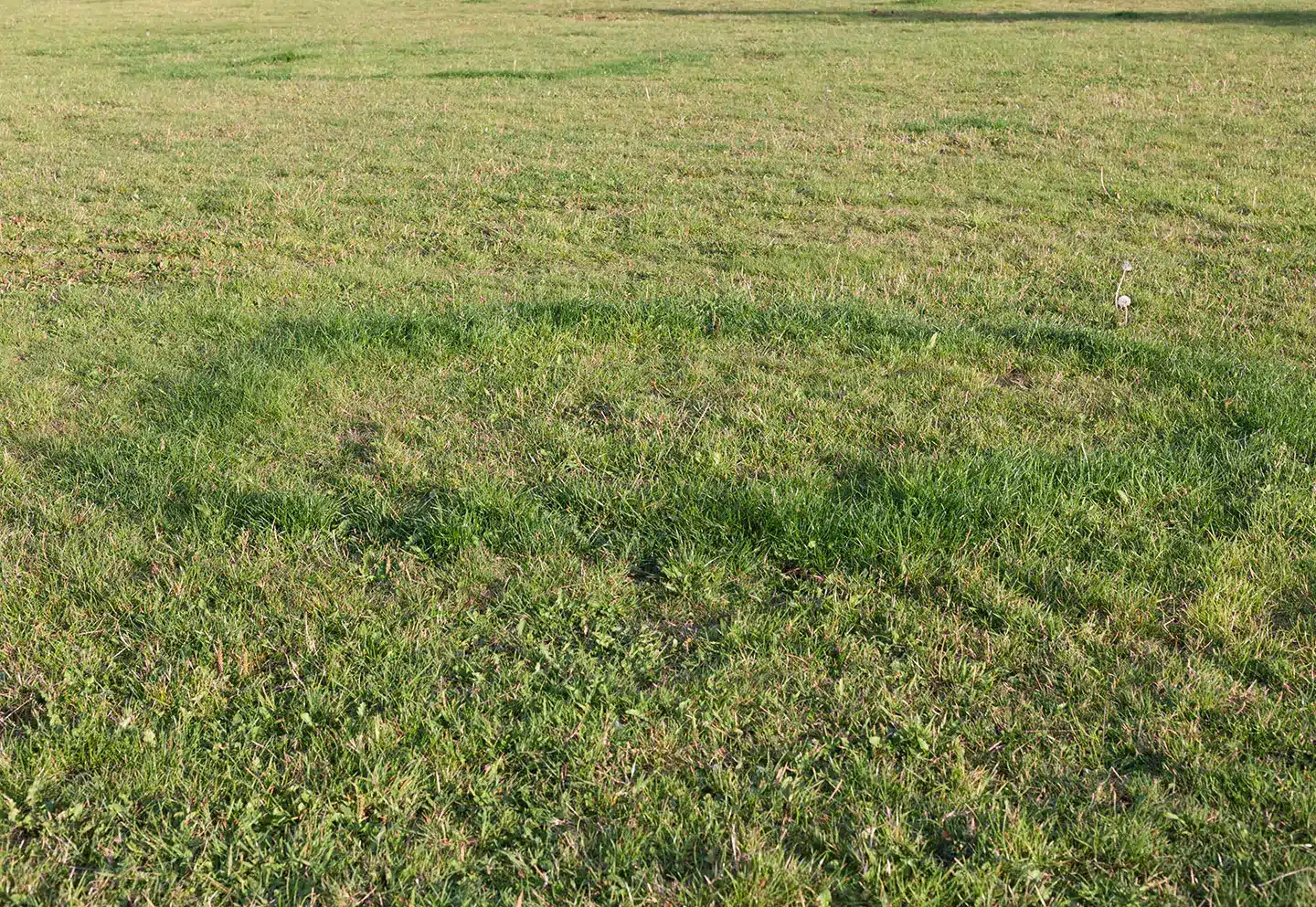Diseases
Steps to Prevent Disease
Water in the early morning (4am-8am).
Water less frequently, but longer each time.
Bag your clippings.

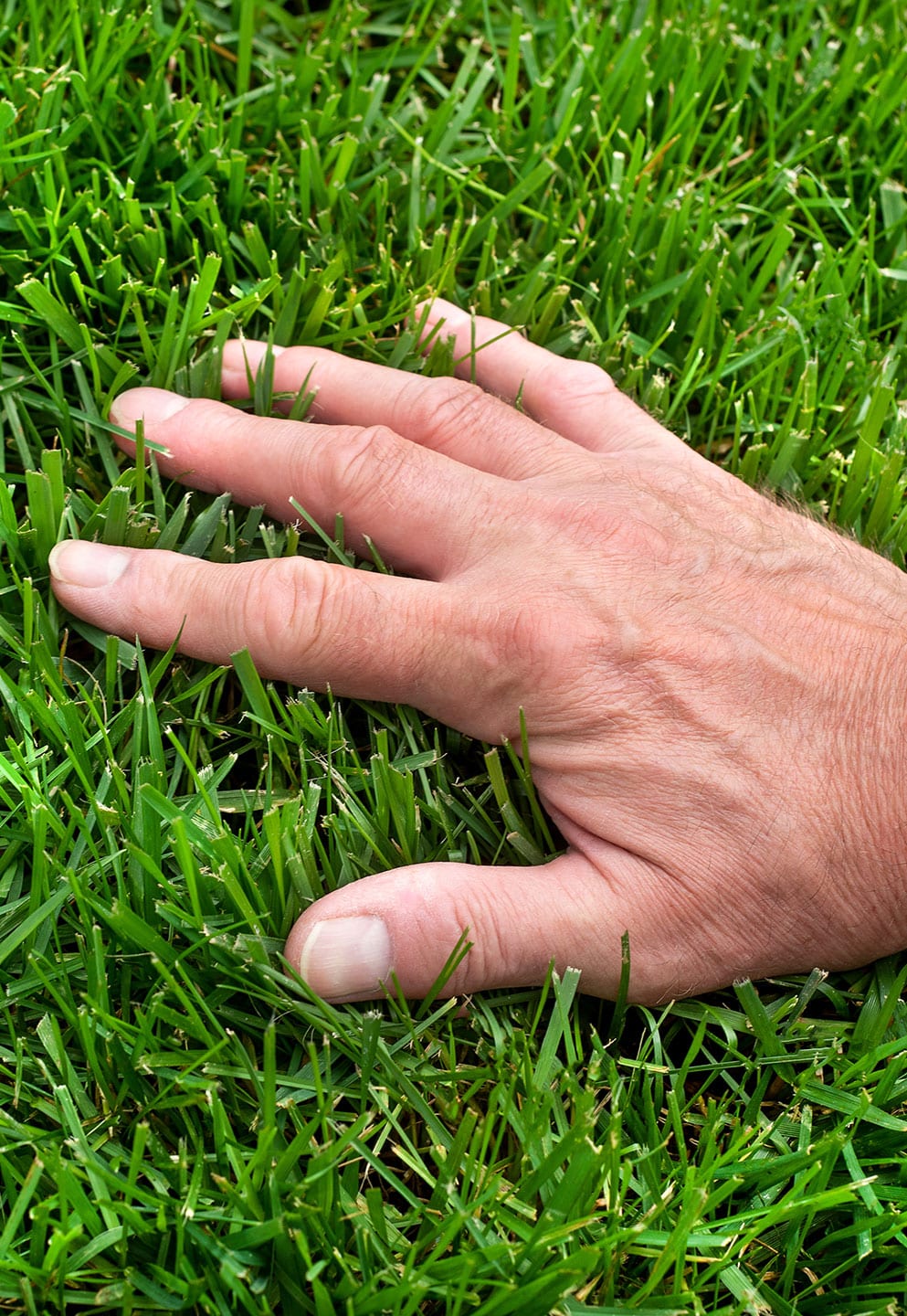
Mow tall.
Sharpen your mower blade.
Plant disease resistant seed.
Aerate your lawn in the spring or fall.
Apply a preventative or curative fungicide.
Common Lawn Diseases


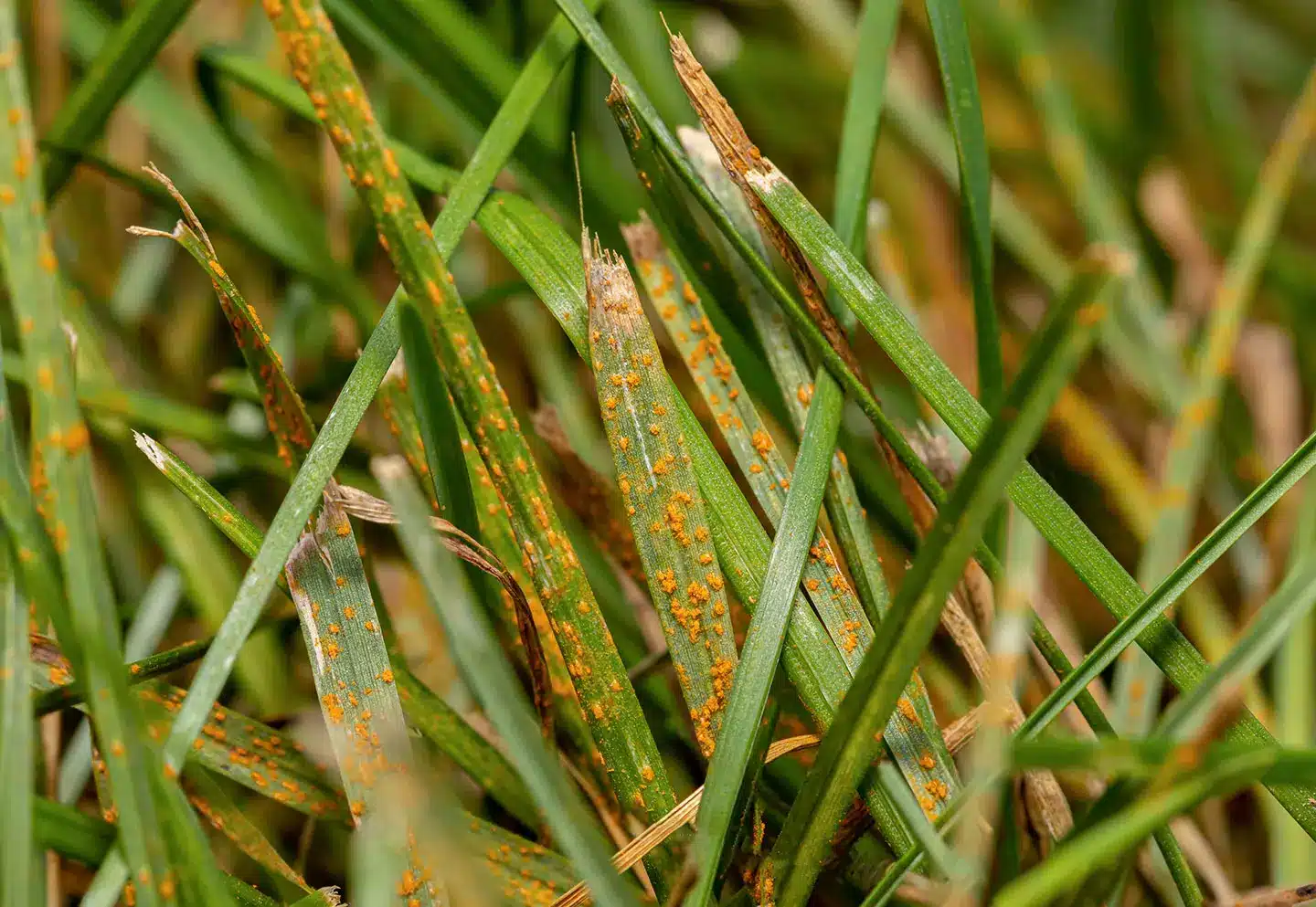
LEAF SPOT– Leaf spot damage first appears as fading out of the turf. In severe cases, rotting of the grass roots and crowns may occur. Small oval, dark spots appear on grass blades causing the lawn to lose color. Leaf spot is most active during the late spring with temperatures between 65-80 degrees and during prolonged periods of cloudy and overcast days. Leaf spot is fairly easy to control and several general curative fungicides will help the lawn recover.
SUMMER PATCH– Summer patch damage first appears as 6-12″ semi-circle or crescent shaped dead patches in the sunny areas of the lawn. As the disease worsens, the patches often run together forming a “frog-eye” pattern. The dead grass is yellowish brown and matted. Summer patch is most active between 80-90 degrees and usually breaks out during hot weather that follows a wet period. It can be a very damaging disease spreading throughout an entire lawn. Although curative fungicides can help the lawn recover, preventative fungicides are recommended. Applications need to be applied repeatedly beginning in late May.


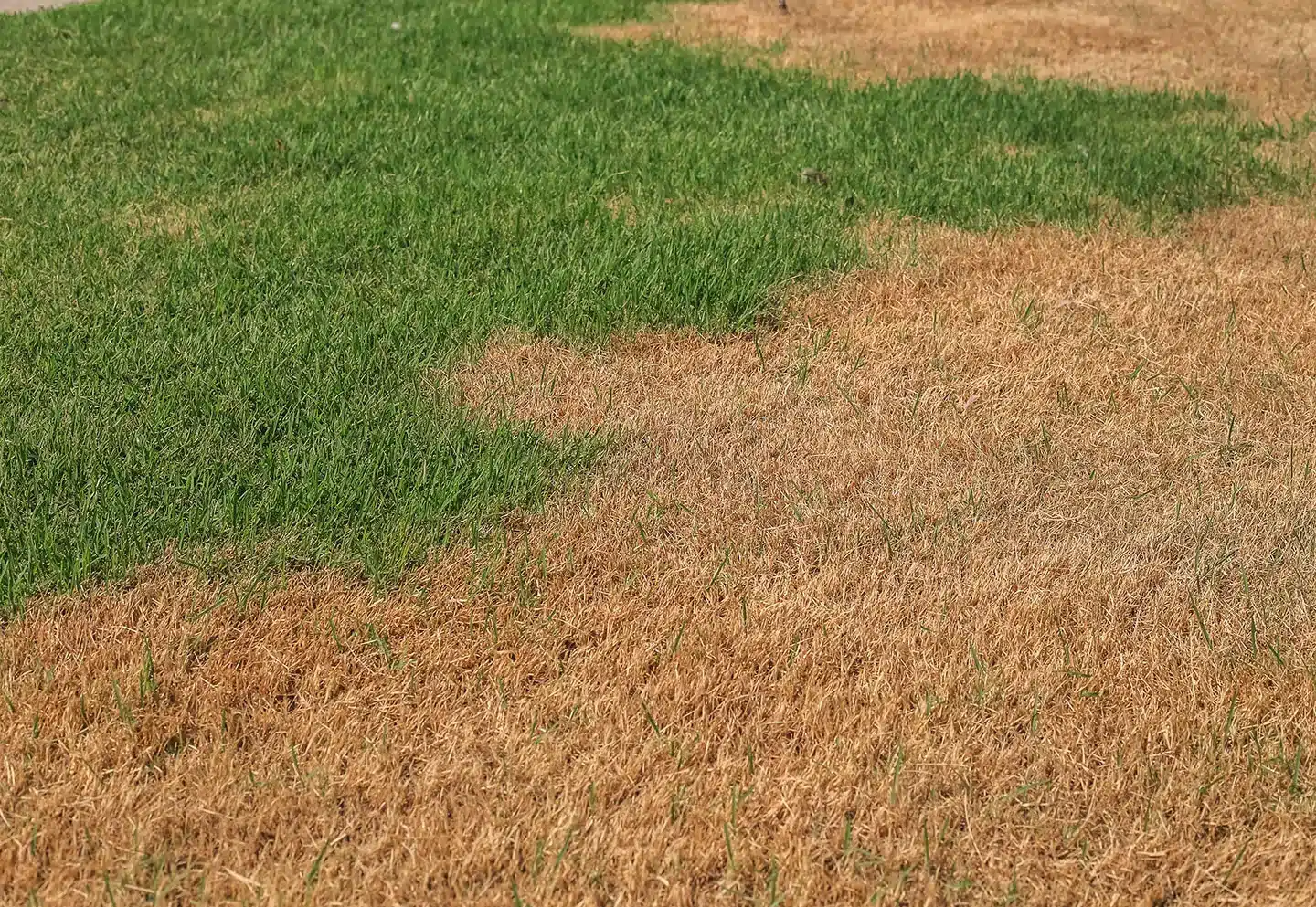
BROWN PATCH– Brown patch damage first appears as light brown, roughly circular patches that have a sunken look. As the disease worsens, the patches may grow up to 2 feet in diameter, and cover large areas of the lawn. A grayish “smoke ring” may be seen around the edge of the patches. Grass blades will have irregular bleached spots surrounded by dark brown margins. Brown patch is most active during hot, humid weather with temperatures above 85 degrees. Like summer patch, brown patch can be a very damaging disease. Curative fungicides can help the lawn recover.
POWDERY MILDEW– Powdery Mildew appears as white to gray dust on grass blades. It usually occurs in areas with heavy shade and poor air movement. In severe cases, grass plants may wither and die. Powdery mildew is most active during the summer and fall. Increasing light intensity and air movement will help the lawn recover. A general curative fungicide will also help, but is rarely needed.


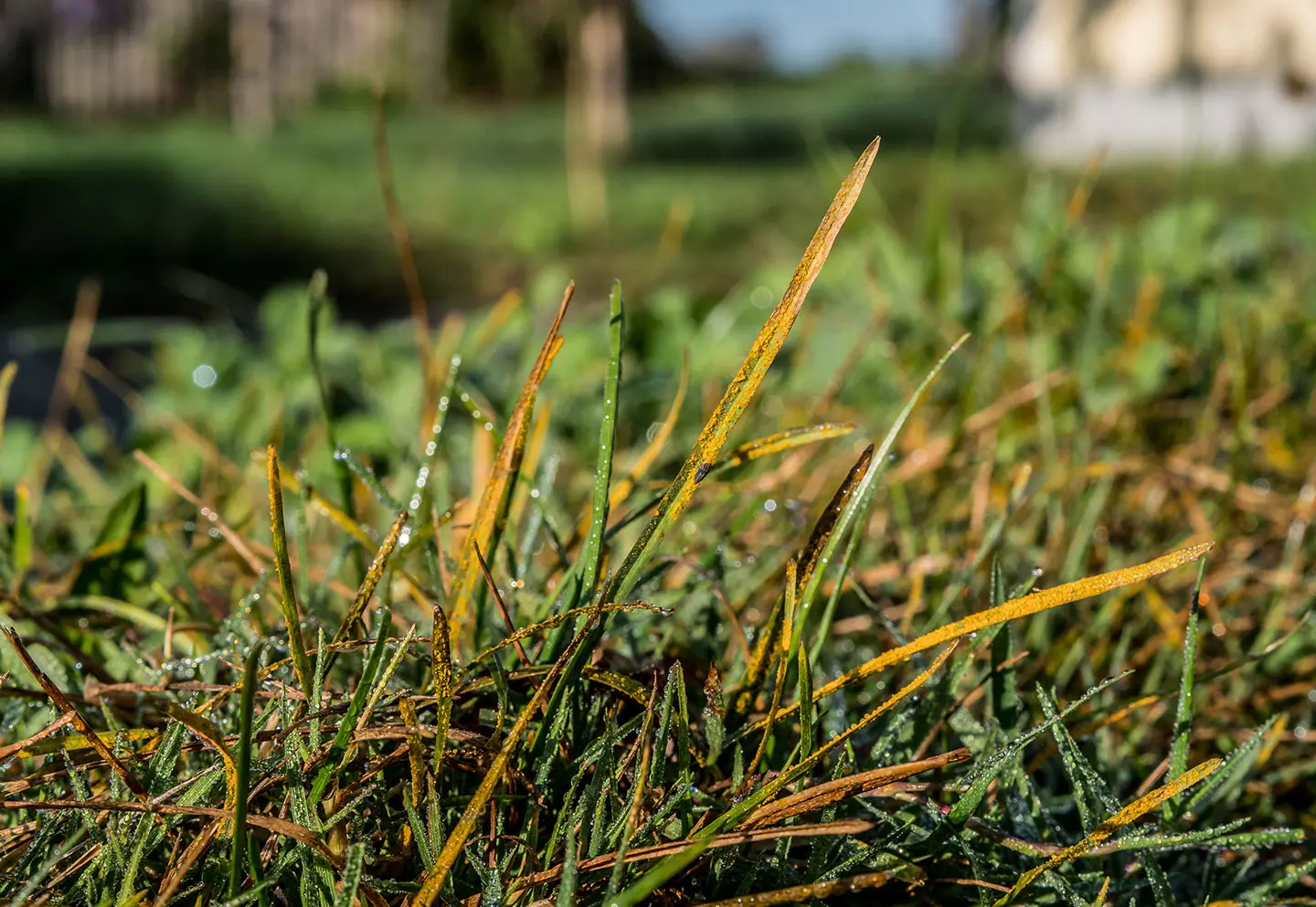
RUST– Rust appears as orange to reddish brown pustules on grass blades. It is easily noticed on shoes and mowers that have passed through an infected area. In severe cases, the lawn will thin out from the loss of leaves and stems. Rust is most active during the late summer when cooler nights produce heavy dew. Avoid watering during the evening and limit activity in the areas that have rust to keep the disease from spreading. A general curative fungicide will also help the lawn recover.
FAIRY RINGS & MUSHROOMS– Fairy rings appear as dark green circles or semi-circles in the lawn. They vary in size from 1 to 10 feet in diameter. They are caused by the decay of buried stumps and other pieces of wood. Fairy rings often contain clusters of mushrooms and puffballs. Mushrooms grow from decaying organic matter and are most likely to form in areas with high organic debris, such as buried wood. Mushrooms grow best under wet conditions, but die off quickly with warm, dry air and sunshine. Fungicides do not suppress fairy rings or mushrooms, so it is recommended to dig up and remove the soil in the infected area.
